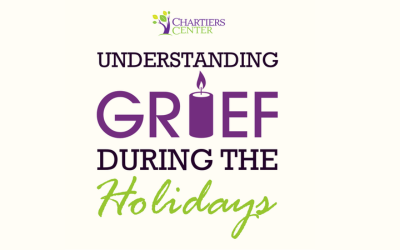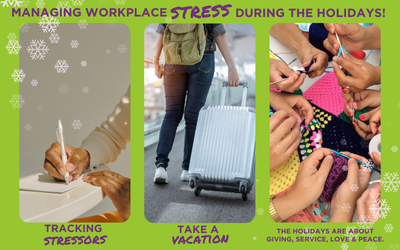Philadelphia Inquirer
by Aparna Nathan Jul 29, 2021
September brings an annual ritual of grumbling and tantrums, as kids reluctantly trade lazy summer days for a return to the classroom. But this year, parents might notice more unusual behavior: nightmares, extreme outbursts, aches and pains.
Millions of students nationwide are preparing for fully in-person education for the first time in nearly a year and a half. In that time, they have faced extraordinary social isolation, learning obstacles, trauma and grief — especially for students of color, those living in poverty, or others who were disproportionately affected by the COVID-19 pandemic.
“Back-to-school is always a challenging time for families, and this year it’ll be probably even more so,” said Jason Lewis, a psychologist at the Children’s Hospital of Philadelphia and assistant professor of clinical psychiatry at Penn’s Perelman School of Medicine.
Kathy Wu, a psychologist in private practice and assistant professor at Widener University, said she has been getting more calls to help children transition back to school. The issues “really range a great deal in terms of the usual run-of-the-mill issues that I often see at this time of the year to things that are a little bit more severe and serious,” she said. Typical pain points include resuming morning routines, getting used to a new classroom of peers, and academic demands.
Adults should pay attention to changes in children’s normal behaviors, Wu said. A usually talkative child might become withdrawn, start skipping meals, or disengage from their favorite activities. Some kids might become clingier than usual.
Adults can help prepare children to make the transition back to the classroom smoother, but the time to start is now, Lewis said. Here are Philadelphia mental-health experts’ tips to help kids — and their families — gear up for September:
Talk it out
Kids might be feeling worried, but that’s normal, Wu said. After more than a year of pandemic-induced vigilance and loss, “there are absolutely real as well as perceived fears,” she said, so it’s important to talk openly and honestly about them. This includes both validating children’s concerns — and explaining masking and distancing requirements — but also reassuring them.
“Let them know that in the past, we had to be very worried for each other because there were more evident threats out there,” Wu said. But a lot has changed in the past year to make people safer, including the distribution of vaccines. “Being able to give them more of a reality check for how things are different now than they were a year ago could be really helpful to alleviate some of the fears.”
Kids may be more reassured if you can raise specific points of evidence, such as recent outings to visit family or friends where everyone was safe and healthy. Kamilah Jackson, medical director at AmeriHealth Caritas, offers tips for talking to children about COVID-19: Stay calm, state the facts without overexplaining, and maintain open daily communication about their emotional well-being.
Children who have been completely remote for the last year will have to negotiate new kinds of interactions with people outside their family, such as an unmasked play date with a classmate or sleepover at other families’ homes. Prepare children for conversations about these activities by having your own discussion as a family or household about what you’re all comfortable with. A little bit of practice at home on how to communicate these preferences to others will help kids feel less anxious about tackling these difficult conversations.
Get back into a routine
Routines carefully reinforced for years went out the window for many families this last year. Waking up early became less necessary when there was no bus to catch. Without school to structure breakfast, lunch, and an afternoon snack, kids may have started eating at odd hours. And parents whose homes became simultaneously an office, day-care center, and school simply may not have had the energy left to cook dinner or enforce a bedtime. But restful sleep and regular meals are essential for kids’ cognitive and emotional function, Wu said.
Routine can also have mental-health benefits, Lewis said. “Kids may fight it, but they do really want structure and routine,” Lewis said. “It helps them to feel safe and in control of their situation.”
Wu recommends a “three-week rule” to build new routines for children. Start with bedtime: This is a priority for kids who may be sleeping through the day because they are not getting restful sleep. Establish times when electronics need to be put away and lights need to be off.
Then, start building a meal schedule that mimics the structure of a school schedule: breakfast in the morning, lunch midday, and dinner in the evening. This kind of gradual ramp up will make the transition less abrupt for your child — and for you, because adults may also need to re-engage with tasks that lapsed during the pandemic. Finally, add other activities into the mix. Physical activity is especially important for physical and emotional well-being, Lewis said.
Support kids even from a distance
It’s common for kids — especially for younger kids — to cling to parents when it’s time to return to school, said Jessica Kendorski, a psychologist and chair of the department of school psychology at Philadelphia College of Osteopathic Medicine. But more intense, chronic symptoms — refusal to go to school, tantrums, crying spells — might be a sign of separation anxiety.
“Children are going to have a hard time engaging in other relationships that they’re perhaps not familiar with,” Wu said. Wu suggests smaller periods of separation over the summer, such as taking your child to another family member or friend’s house. Kendorski also recommends giving kids reminders that you are still there to support them even if you are not physically present, such as a pocket-sized toy. “You can say, ‘When you feel like you miss me or you feel like you want to go home, touch the little toy and remind yourself that I’m going to be there at 3 p.m. to pick you up.’
Teens may also feel separation anxiety, although their symptoms might look different. Adults might see more avoidance behaviors in older kids, including physical ailments, such as a headache, that prevent them from going to school. For these kids, Kendorski recommends trying to figure out what reasons might be causing stress and working together to find solutions. If they are worried about socializing, talk to them about inviting friends over to hang out before school starts.
Recognize kids’ unique experiences
“We need to first be very aware and acknowledge the fact that certain pockets of our population — families of color, children of color — have been impacted in a way that other families have not,” Lewis said.
The pandemic has highlighted and widened existing socioeconomic and racial gaps and that has taken a toll on children. Schools serving children of color have been less likely to reopen for in-person education. Black, Latino, and Native American people have disproportionately become ill or died of COVID-19. Essential workers, often people of color, have had to continue working throughout the pandemic, placing themselves and their households at high risk of COVID-19, while many others lost jobs. Asian Americans have faced heightened discrimination.
“There’s just going to be so many ways in which children will have to shift,” Wu said. For example, if a child lost a caregiver or other loved one who was involved in their school experiences, acknowledge the loss and show them that other people will provide the support that they might be missing, such as picking them up after school or helping with homework, she said. Teachers can also help by using trauma-informed strategies to engage the child at school.
Learning loss has also been common, especially among low-income kids and children of color, because of the challenges posed by virtual and hybrid classroom formats. That means kids might feel frustrated by the pace of instruction or the fact that they do not know material that they’re expected to know.
“The level of expectation needs to be adjusted for both parents and children,” Wu said. Keep an eye on how your children are faring in the classroom, and advocate for them if they are struggling. For example, let the teacher know that your child never learned a particular topic last year, or learned it but never understood it.
Take care of yourself
The number one thing for adults to be mindful of is their own anxiety about COVID-19 and their kids’ return to school, Kendorski said. “We think that we can shield our kids from our responses but they’ll always pick up on it,” Kendorski said. Openly acknowledging these feelings can help validate kids’ feelings while modeling how to work through them.
Seeing kids’ emotional reactions to separation can also be upsetting for caregivers, so give yourself more time and flexibility in the first few weeks of the school year to process your emotions.
And if your efforts to soothe your child seem not to work, don’t worry. There are other helpful resources even over the summer, including teachers, counselors, primary-care physicians, or online resources. “Let school personnel know now that you’re having these concerns so that a plan can be put into place and you feel supported, as a parent, to help your child transition back to school,” Lewis said.
Article was taken from the Philadelphia Inquirer and can be found here:
https://www.inquirer.com/health/kids-return-to-school-mental-health-tips-20210729.html
Ways To Stay Sober Through The Holidays
The holiday season is upon us and this can be a challenging time for some individuals especially those who are in recovery and expected to engage in festivities. These...



